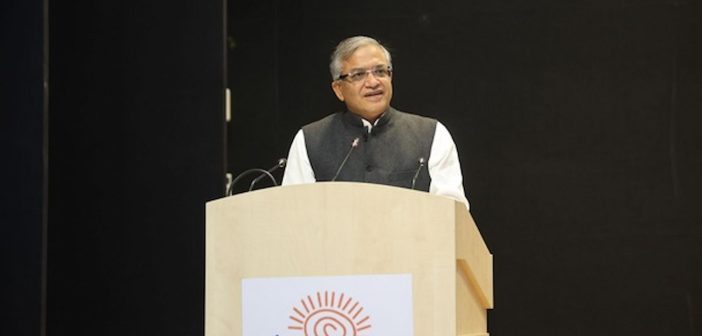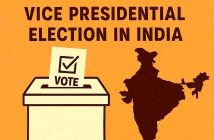Bihar faces fears of mass voter disenfranchisement and a tense succession showdown ahead of the Assembly polls.
Bihar’s 2025 Assembly elections are heating up with the Special Intensive Revision (SIR) controversy of voter lists sparking debates. Allegations of voter suppression intertwine with political succession battles, as Tejashwi Yadav rises as RJD’s heir apparent while Nitish Kumar’s leadership wanes. The opposition cries foul over SIR’s timing, fearing disenfranchisement, while the ruling NDA defends it. How will the Bihar SIR voter list revision and shifting political heirs shape the electoral landscape? Dive into the high-stakes drama unfolding in Bihar’s political arena ahead of the crucial polls.
Understanding the Bihar SIR Voter List Revision
The Special Intensive Revision (SIR) is a massive exercise by the Election Commission of India (ECI) to update Bihar’s electoral rolls. Announced on June 24, 2025, it targets 7.9 crore voters ahead of the Bihar Assembly elections. The ECI aims to ensure only eligible citizens are included, excluding non-residents, deceased voters, and non-citizens. Voters registered before 2003 need only an enumeration form, while those registered after 2003 must submit documents proving their birth and citizenship. Critics argue the tight timeline—forms due by July 25, 2025—risks disenfranchising millions, especially migrants and people with low incomes.
The Bihar SIR voter list revision has drawn fire for its stringent document requirements. Aadhaar, voter IDs, and ration cards are excluded, with the ECI requiring documents such as birth certificates or passports for verification. In a state with low literacy and documentation, this could exclude up to 20 million voters, particularly Dalits, backward classes, and minorities. The Supreme Court, on July 10, urged the ECI to consider Aadhaar and ration cards, citing risks of mass disenfranchisement. The court’s next hearing, scheduled for July 28, will scrutinize the legality and timing of SIR.
Political Succession: A Shifting Landscape
Bihar’s political scene is equally turbulent, with succession battles shaping the dynamics of its parties. The RJD, led by Lalu Prasad Yadav, has pinned its hopes on his son, Tejashwi Yadav. At 35, Tejashwi is a rising star, outranking Nitish Kumar in opinion polls as a chief ministerial candidate. His appeal among the Muslim-Yadav vote base strengthens the RJD, Bihar’s largest single party. The opposition alliance strategy meeting has focused on leveraging Tejashwi’s youth and charisma to challenge the ruling National Democratic Alliance (NDA).
In contrast, Nitish Kumar’s JD(U) faces uncertainty. At 74, Nitish’s health and leadership are under scrutiny. His reputation, once bolstered by curbing crime, has taken a hit due to a recent violent crime wave in Patna. With no clear successor, JD(U) relies on Nitish’s coalition-building skills, honed over 17 years as Chief Minister. The BJP, a key NDA ally, continues to back Nitish for his caste-neutral female voter base, strengthened by schemes like prohibition and free cycles for schoolgirls.
Opposition’s Outcry and INDIA Bloc Strategy
The opposition, particularly the INDIA bloc, has slammed the Bihar SIR voter list revision as a “conspiracy” to suppress voters. At an INDIA bloc virtual meeting, leaders like Congress’s Pawan Khera and RJD’s Manoj Jha called SIR a “backdoor NRC,” targeting minorities and marginalized groups. They argue the ECI’s document demands are impractical for Bihar’s poor, with only 2.8% of people born between 2001 and 2005 holding birth certificates. The opposition alliance strategy meeting emphasized legal challenges, with petitions filed in the Supreme Court.
Congress leader Abhishek Singhvi questioned the SIR’s timing, noting the 2003 revision was done well before elections. The INDIA bloc seat-sharing talks are intensifying, with parties like CPI(Marxist-Leninist) Liberation aiming to woo Dalits and smaller OBC castes. Meanwhile, Prashant Kishor’s Jan Suraaj Party is targeting younger, caste-neutral voters, adding complexity to the electoral battle. The opposition fears SIR could tilt the scales in favor of the NDA by reducing opposition strongholds.
Ruling NDA’s Defense and Electoral Strategy
The NDA, led by the BJP and JD(U), defends the SIR as a necessary clean-up. The ECI claims 94.68% of voters have submitted forms, with 32 lakh still pending as of July 19. Chief Electoral Officer Vinod Singh Gunjiyal insists the process is smooth, with voters allowed to submit documents later. The BJP dismisses opposition claims, with spokesperson Niraj Kumar accusing the RJD of insulting constitutional institutions. The NDA’s strategy hinges on Nitish’s appeal among women and marginalized castes, bolstered by welfare schemes.
However, the BJP faces challenges. Its Hindutva agenda struggles in Bihar, where socialist and anti-caste sentiments dominate. The party relies on Nitish’s coalition expertise and caste arithmetic, including Mahadalits and Kurmi/Koeri voters. The INDIA bloc seat-sharing talks could disrupt this balance if the opposition consolidates its vote base. The NDA is also wary of Prashant Kishor’s Jan Suraaj, which may split the youth vote.
Voter Sentiment: Trust Under Strain
The Bihar SIR voter list revision is eroding voter trust. Many fear exclusion due to documentation issues, especially migrants, estimated at 1.76 crore since 2003. The opposition’s narrative of SIR as voter suppression resonates with people with low incomes and minorities, who feel targeted. Meanwhile, debates over political succession are fueling uncertainty. Tejashwi’s rise energizes RJD supporters, but Nitish’s declining health worries voters who value his governance record. The interplay of SIR and succession is creating a polarized electorate, with caste remaining the ultimate trump card.
Women voters, a key demographic, are swayed by Nitish’s welfare schemes but are also drawn to Tejashwi’s youth-focused promises. The INDIA bloc virtual meeting highlighted job creation and education, addressing Bihar’s low gross enrolment ratio and high migration rates. However, the opposition’s inconsistent messaging—calling the elections rigged yet urging people to vote—confuses its supporters. The NDA, meanwhile, projects stability but struggles to counter perceptions of electoral manipulation.
Governance Stability at Stake
Balancing the Bihar SIR voter list revision with leadership transitions is testing Bihar’s governance. Nitish’s coalition government, in power since 2000, relies on his ability to navigate caste alliances. However, his health concerns and the lack of a clear JD(U) heir raise fears of instability. The RJD, with Tejashwi at the helm, is advocating for a governance model centered on job creation and social justice. The INDIA bloc leaders meeting stressed countering SIR’s impact through grassroots campaigns, but internal rivalries could weaken their efforts.
The ECI’s credibility is also under scrutiny. Allegations of fake form submissions and the exclusion of migrants have damaged public faith. The Supreme Court’s 1995 ruling, which placed the burden of proving non-citizenship on authorities, contrasts with SIR’s approach, fueling distrust. Governance continuity depends on a transparent electoral process, but SIR’s rushed timeline and strict rules threaten this. The NDA must address these concerns to maintain voter confidence.
Future Outlook: A High-Stakes Election
The Bihar Assembly elections will hinge on how SIR and succession play out. If the ECI addresses documentation concerns, as urged by the Supreme Court, voter trust could be restored. However, failure to do so risks legitimizing opposition claims of rigging. Tejashwi’s rise strengthens the RJD, but the INDIA bloc seat-sharing talks must yield a unified strategy to challenge the NDA. Nitish’s legacy, while strong, may not suffice without a clear successor. Prashant Kishor’s Jan Suraaj could emerge as a wildcard, drawing younger voters.
The interplay of SIR and political heirs will define Bihar’s electoral roadmap. A fair voter roll revision could bolster democratic participation, but mishandling it may alienate millions of voters. Similarly, smooth leadership transitions will ensure stability, while chaos could fracture alliances. Bihar’s voters, driven by caste and economic aspirations, will ultimately decide the outcome in this high-stakes battle.
Conclusion
Bihar’s 2025 Assembly elections are a crucible of electoral reform and political succession. The SIR, meant to purify voter rolls, risks disenfranchising millions, while Tejashwi Yadav’s rise and Nitish Kumar’s uncertain future reshape party dynamics. The opposition’s push against SIR and the NDA’s defense highlight a polarized landscape. Governance stability and voter trust are at stake as Bihar navigates this dual challenge. The coming months will reveal whether fairness prevails in both voter inclusion and leadership transitions.
Stay informed on Bihar’s electoral developments—follow our updates for the latest insights.




